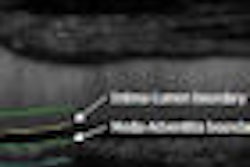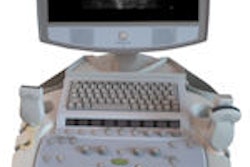Restricting the number of off-hours venous duplex ultrasound studies for evaluating deep vein thrombosis (DVT) can improve resource utilization without hurting patient care, according to research published in the Annals of Vascular Surgery.
Researchers from the University of Pittsburgh School of Medicine found that limiting these studies to only those that met certain criteria led to fewer exams and a higher frequency of positive findings. In addition, the policy helped the institution maintain sonographer satisfaction and retention, all without any negative patient effects.
"This approach may be used by others seeking a similar change in resource use in suspected DVT," wrote a study team led by Dr. Rabih Chaer (Ann Vasc Surgery, September 11, 2009).
Venous duplex ultrasound is commonly used to evaluate suspected DVT, but its increased use lately in low-risk patients has contributed to high percentages of negative studies.
At the same time, the low rate of positive studies has led many sonographers to cite after-hours call as a major source of dissatisfaction, according to the authors. With vascular laboratory sonographers in high demand in today's job market, institutions face challenges in recruiting and retaining them.
Seeking to address this dynamic, the University of Pittsburgh Medical Center sought to streamline and focus its off-hour venous duplex ultrasound testing. They believed that structured ordering rules, developed in a collaborative and interdisciplinary manner, would lower off-hours utilization of emergent venous duplex ultrasound without harming patients.
On July 1, 2007, the institution's vascular laboratory implemented a new policy for its emergency department (ED) and hospitalized patients. Developed in collaboration with the vascular surgery, emergency medicine, and internal medicine departments, the policy requires an ordering physician to communicate with the on-call vascular surgeon to get approval for any inpatient study. These patients had to be unable to safely receive empiric short-term coagulation.
As for ED patients, they could only receive off-hours venous duplex ultrasound after the ED physician completed a structured evaluation form. This form was designed around the modified Wells score for clinical risk of DVT to help standardize decision-making and potential disposition options, according to the researchers.
ED physicians caring for patients at low risk for DVT (Wells score of 0 and/or negative D-dimer test) were guided to discharge them and refer for outpatient follow-up the next day; patients at moderate risk for DVT (Wells score > 1 or positive D-dimer) received empiric anticoagulation with low molecular weight heparin (LMWH) and were scheduled for venous duplex ultrasound in the morning, according to the researchers.
The ED attending physician chose the final patient care plan, either discharging the patient with plans to return for venous duplex ultrasound in the morning, holding the patient in the ED for early-morning venous duplex ultrasound, or admitting the patient.
"For moderate- or high-risk patients in whom empiric anticoagulation was contraindicated or declined, the ED physician noted the contraindication on the order set and the sonographer was called in after hours to perform the test," the authors wrote.
An ongoing dialogue continued between the vascular surgery and ED physicians to ensure patient safety and streamline the process, the authors noted.
In the year after the policy was adopted, the institution performed a monthly average of 19 off-hours emergent venous duplex ultrasound studies, down from an average of 59 per month in the previous year. Overall off-hours inpatient and ED venous duplex ultrasound requests dropped 64%, without any clinically adverse events noted in the first year.
Also, the rate of off-hours positive studies increased from 6.7% to 20% (p < 0.0001).
In other findings, venous duplex ultrasound tests were deferred in 52 ED patients. Of these, 15 stayed in the ED for morning testing, while 37 were discharged for next-day scanning.
Of these 37 patients, 31 returned for outpatient follow-up scans. While awaiting testing, 28 received LMWH in the ED, according to the researchers. The delays did not lead to any adverse events. The mean modified Wells score for ED after-hours studies was 2.9 ± 1.6, and for deferred after-hours ED studies, the score was 2.4 ± 1.3.
Surveys of sonographers also found improved job satisfaction. While three vascular sonographers resigned during the year after the policy was implemented, exit interviews determined that the departures were related to job advancement opportunities within the institution or a move out of the state, the researchers said.
"The development of safe and feasible algorithms for the management of patients with suspected DVT that minimizes the need for emergency diagnostic imaging with [venous duplex ultrasound] allows for 24-hour service and diminishes stress on the vascular laboratory resources and personnel, while improving sonographer satisfaction and retention," the authors concluded. "Our collaborative effort to restrict off-hours [venous duplex ultrasound] resulted in fewer studies, increased frequency of positive results, and no observed patient harm."
By Erik L. Ridley
AuntMinnie.com staff writer
November 5, 2009
Related Reading
Two-point US exam keeps up with whole-leg US in detecting DVT, October 9, 2008
Lack of residual vein thrombosis indicates low risk for recurrent DVT, September 17, 2008
Rapid lysis technique removes DVT, prevents post-thrombotic syndrome, March 5, 2007
New venous thromboembolism diagnosis guidelines specify imaging's role, February 16, 2007
CT venography offers DVT alternative to ultrasound in ICU, August 19, 2005
Copyright © 2009 AuntMinnie.com



















